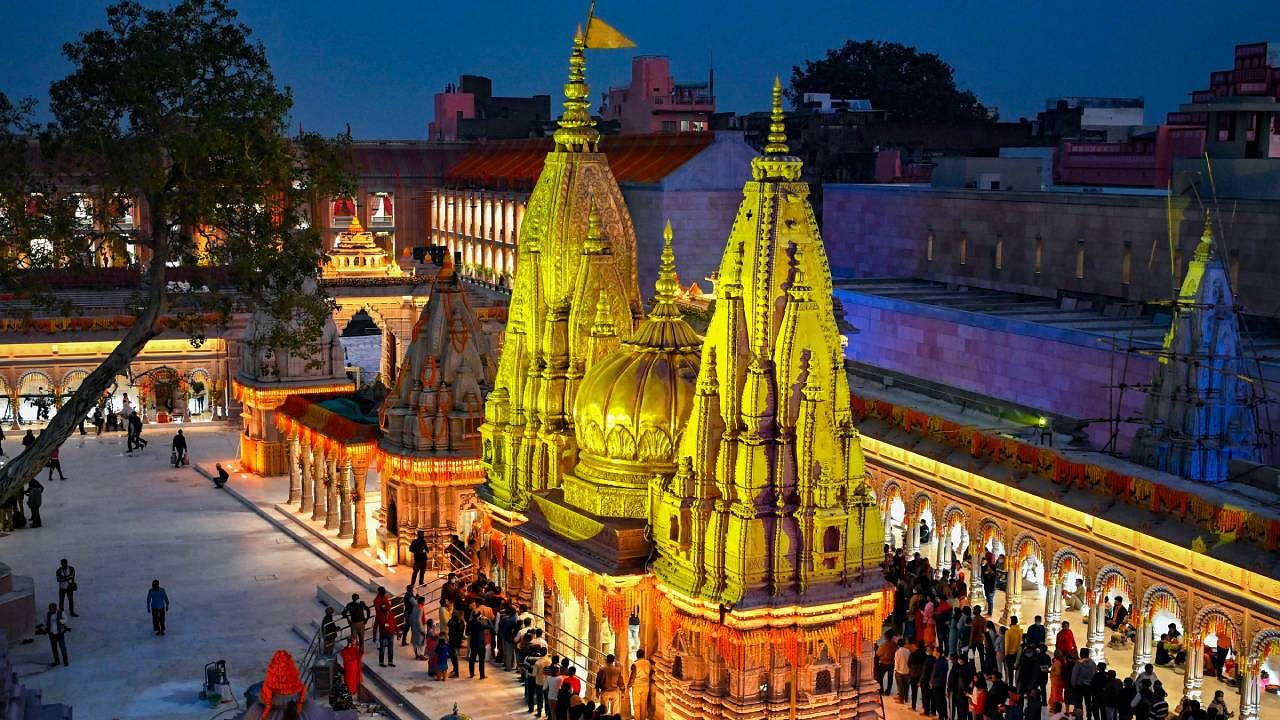
Who writes letters in blood to the authorities? When the farmers protesting at the Singhu border opposing the Centre’s three farm laws did so in December 2020, it was as part of a series of courageous acts of resistance that included facing police lathis and camping out in the bitter cold. But the latest to dip their pens in blood are a most unlikely group: The shopkeepers of Vrindavan, in Uttar Pradesh.’
Desperate to stop the proposed Banke Bihari Mandir Corridor, they’ve pointed out in their letters to Prime Minister Narendra Modi and Uttar Pradesh Chief Minister Yogi Adityanath, that the impending demolition of 300 shops and houses for the corridor would mean not just loss of livelihood for them, but also loss of heritage for the ancient city.
The Banke Bihari corridor is part of the Centre’s scheme to convert ancient Hindu pilgrimage sites to grand tourist destinations. The Kashi Vishwanath corridor was the pioneer, followed by the Ujjain Mahakal Mandir corridor. Currently, work is on in FdipAyodhya for the Ram Path. Every day bulldozers wipe out structures that have graced this ancient city for more than a hundred years.
When the Babri masjid-Ram Janmabhoomi controversy was at its height, Ayodhya’s residents would point out that there was no one temple that could be called the definitive birthplace of Ram; that the numerous temples found there were all connected with the popular deity. There was even a Janmasthan Sita ki Rasoi (Birthplace Sita’s Kitchen). The 250-year-old temple, which featured on every travel advisory to Ayodhya, no longer exists, having been demolished to make way for the construction of the massive Ram temple on the site of the Babri masjid.
Must one grand temple overshadow all other temples to the same deity? That doesn’t seem to be the way Hindu worship was intended. Our holiest cities: Benares, Mathura, Ayodhya, Vrindavan, have many small and large temples connected to one deity, some sharing the same status, enabling residents to form an intimate bond with their gods.
These cities are considered holy in their entirety, as places where popular gods were born and/or spent part of their lives. The lanes of Vrindavan are known as Krishna’s abode. When the Kashi Vishwanath corridor was being built, residents of Benares upset at the demolition of old structures, some of which housed tiny temples, Shiva lings, as well as motifs of mythological significance on their edifices, recalled the old saying “Kashi ke kan kan mein Shiv” (Shiv resides in every particle in Banares). Indeed, the quintessential Benarasi lifestyle is said to be bohemian and individualistic, influenced by the qualities of Bholenath as the god is affectionately called.
But playfulness and non-conformism are not the qualities envisaged by the Kashi Vishwanath corridor or any of the other corridors being built. For them, the descriptions invoked spell grandeur, splendour, awe, glory, pride, flags fluttering high...a vocabulary that signifies conquest. Indeed, Modi’s and Home Minister Amit Shah’s speeches at these ancient temples have reminded Hindus of past ‘humiliation’ and ‘restored confidence’. It’s not just tourism, but ‘Hindu’ triumph that’s being sought to be established through these corridors.
Ironically, this triumph has involved the destruction of the Hindus’ spiritual heritage in a way that recalls the medieval invasions that the Bharatiya Janata Party (BJP) wants to avenge through these corridors. In fact, claimed a priest in Vrindavan, even the Mughals didn’t treat “Thakurji” (Lord Krishna) as badly as the BJP government was doing.
These corridors raise two vital questions: can ease of access to vehicles and the capacity to cater to tens of thousands of tourists be the main criteria in improving ancient religious sites? Can’t the urban filth that is often seen in the narrow lanes leading to these temples be got rid of without discarding their historic unique character? How can food courts, selfie points, parking decks, and malls get priority over carved frontages that embody the skill of our ancient artisans? Finally, what about the wishes of those who’ve lived for generations amid these temples and contributed to these cities, when it’s their lives that will be changed by the latter’s transformation?
All these questions were recently answered by the Jains, whose widespread agitation against the conversion of their pilgrimage site in Jharkhand into a tourism destination, had the Centre rushing to cancel the decision. Two Jain monks gave up their lives for the cause.
But the Jains are unique: A small minority which can easily be organised behind a cause that touches their faith, also one that has always enjoyed tremendous influence with all governments. The same cannot be said about Hindus, despite all the attempts to unite them under the Hindutva banner.